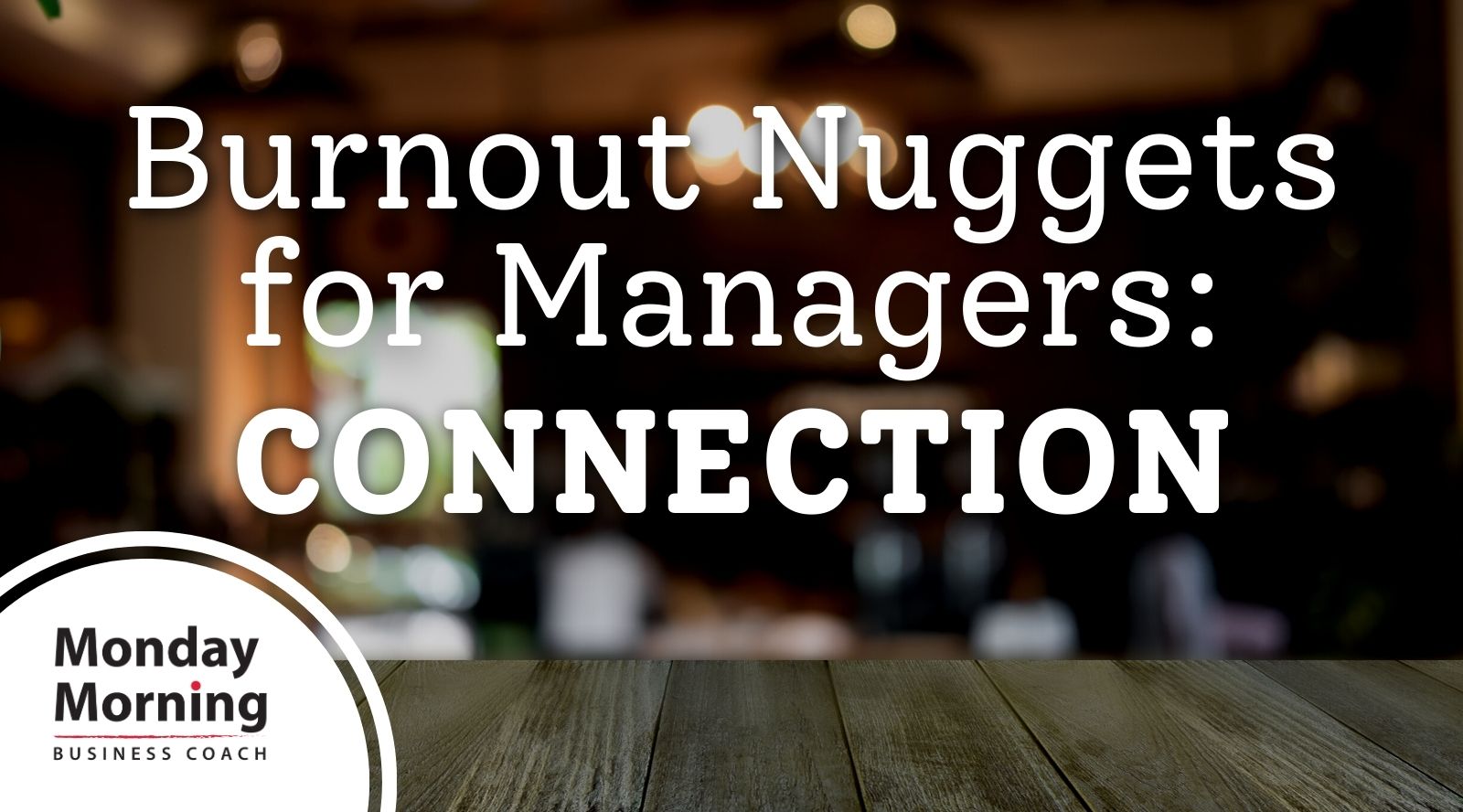Recently, we began a Burnout Series for Managers. In the first post, we noted that the common themes we see in the leaders who are successful in supporting their employees, are ones who model curiosity, caring, and connection.
As a reminder, this is what those look like:
- Curiosity: Genuinely ask how people are doing and what support from you would look like. As you have these conversations, remember to approach people as if you’re standing shoulder-to-shoulder, working toward their individual, team, and organizational success, together.
- Caring and Value: We’ve learned that people feel like they matter to you and belong to something larger than themselves, when you demonstrate that you care about them as individuals and that you value their unique skills and contributions. Being specific when you see them contribute, and curious about how they’re doing during this wild time, will increase their felt experience of being an important member of the team.
- Connection: Building a sense of connection is not a one-and-done. True connection grows over time, by having shared experiences, dealing with success and failure together, talking about development needs, and in having each other’s backs. It can feel like extra work when you first lean in, but the increase in success, the decrease in drama and burnout, and the sense of engagement that fuels the team will accelerate all of your work.
In the past two weeks, we focused on some additional details and scripting examples for Curiosity and Caring. Today, we’re talking in more detail about the importance of Connection.
You may recall that in our recent series aimed at supporting you with your own burnout, connection was key. In those posts, we focused on Connection to Self and Connection to Others as a way to recover from or manage your own burnout. Today, our focus is on the ways you can connect with your work team to support them with theirs—which, in turn, can also help you with yours.
Nurturing your employee relationships
is key to your health
and the health of your team.
As a leader and manager,
it’s important to create a culture
where people take care of themselves,
and where supporting one another is the norm.
Consider the following ideas and suggestions for connecting with your team in a way that leaves them feeling supported.You may notice that there are some repeats from our Curiosity and Caring posts and that’s because these three actions are not mutually exclusive…and in many ways, they build on each other.
- Think about sprinkling in “connection” meetings here and there. Consider sharing your explicit goals for each of these meetings (or ask team members to create them). Connection can come from working together on the team values or sharing something more personal. The goal is not to all become best friends, but to recognize that when individuals bring their whole self to work they’re more effective. Your goals for connection meetings may include:
- eating lunch as a team—even for 20-30 minutes—with no work agenda
- crafting something together like a work-based proposal or a plan to get the team or organization together for an offsite
- a fun activity or challenge that is work-based or personal
- identifying a question for people to respond to that helps you get to know each other better
- individuals sharing gratitude for each other or the team as a whole
- Host a “beating burnout” challenge. Be sure to get input from team members on what it could look like.
- Encourage, model, and connect regularly about healthy work/life balance with things like:
- no emails after a certain hour
- talk about how to ask for support
- coach people on how/when to delegate
- Create space to celebrate each other’s strengths and encourage people to lean on each other to learn and grow.
And then listen as you stay conscious of connection. Really listen.
Summarize what you’ve heard them say and then clarify when needed. Finally, be sure to remind them what you will do with their input and how/when you’ll follow-up (if that’s what’s needed). If no follow-up is needed, let them know that you appreciate the opportunity to have the team grow in their understanding of one another.
As you have these conversations with your employees and teams about how you work individually and as a team, let them know you’re in it together.
Connecting and building relationships takes time and consistency.
Relationships aren’t static—
they must grow and evolve over time.
When you connect with people on a consistent basis,
you’re creating a foundation for trust and openness.
Consider connecting with your employees in a way that demonstrates that you care about and value them, and that welcomes their input and viewpoints with curiosity and openness.
Let us know what’s worked for you!
If you’d like burnout support for
you or your team,
contact us today.

